עוד בפרק זה:
מאי 2020
הספרייה מציעה לקוראיה מידי חודש רשימת ספרים וכתבי-עת חדשים שנוספו לאוספיה כל רשומה מכילה:
מס' מיון, מחבר, כותר, מוציא לאור, שנת הוצאה , נושאים, מס' מערכת תוכן עיניינים ותקציר.
כדי לראות מצב ההשאלות יש ללחוץ על כותר.
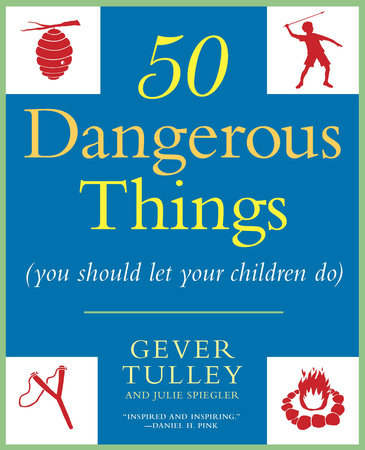 |
159.922.7 TUL Gever Tulley and Julie Spiegler. Fifty dangerous things (you should let your children do) New York : New American Library, [2011] Abstract An activity book about danger and safety—perfect for every parent looking to help their children experience the incredible world around us. In a time when children are too often coddled, 50 Dangerous Things (You Should Let Your Children Do) reminds readers that climbing trees is good for the soul, and that a pocket knife is not a weapon. Full of exciting ways children can explore the world around them, this book explains how to “Play with Fire” and “Taste Electricity” while learning about safety. With easy-to-follow instructions, it includes: • Activities, like walking a tightrope • Skills, like throwing a spear • Projects, like melting glass • Experiences, like sleeping in the wild As it guides you through these childlike challenges and more, 50 Dangerous Things (You Should Let Your Children Do) will inspire the whole household to embrace a little danger Subject Safety education. Play -- Safety measures. Danger perception. 43279
|
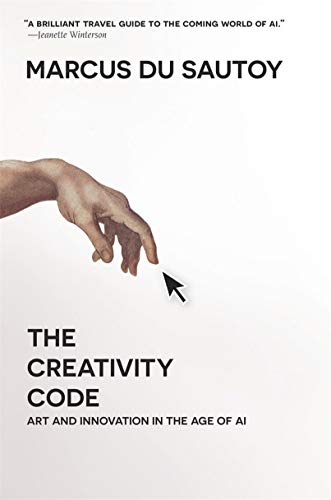 |
159.954.433 DUS Du Sautoy, Marcus The creativity code : art and innovation in the age of AI Cambridge, Massachusetts : Belknap Press of Harvard University Press, [2019] Contents The Lovelace Test -- Three types of creativity -- Ready steady go -- Algorithms, the secret to modern life -- From top-down to bottom-up -- Algorithmic evolution -- Painting by numbers -- Learning from the masters -- The art of mathematics -- The mathematician’s telescope -- Music: the process of sounding mathematics -- The song-writing formula -- Deepmathematics -- Language games -- Let AI tell you a story -- Why we create: a meeting of minds Abstract What does it mean to be creative? Can creativity be trained? Is it uniquely human, or could AI be considered creative? Mathematical genius and exuberant polymath Marcus du Sautoy plunges us into the world of artificial intelligence and algorithmic learning in this essential guide to the future of creativity. He considers the role of pattern and imitation in the creative process and sets out to investigate the programs and programmers―from Deep Mind and the Flow Machine to Botnik and WHIM―who are seeking to rival or surpass human innovation in gaming, music, art, and language. A thrilling tour of the landscape of invention, The Creativity Code explores the new face of creativity and the mysteries of the human code. “As machines outsmart us in ever more domains, we can at least comfort ourselves that one area will remain sacrosanct and uncomputable: human creativity. Or can we?…In his fascinating exploration of the nature of creativity, Marcus du Sautoy questions many of those assumptions.” ―Financial Times “Fascinating…If all the experiences, hopes, dreams, visions, lusts, loves, and hatreds that shape the human imagination amount to nothing more than a ‘code,’ then sooner or later a machine will crack it. Indeed, du Sautoy assembles an eclectic array of evidence to show how that’s happening even now.” Subject Creative ability Creativity Artificial intelligence Creative ability -- Technological innovations. Technology and the arts Machine learning Human-computer interaction Conscious automata Computer algorithms 43615
|
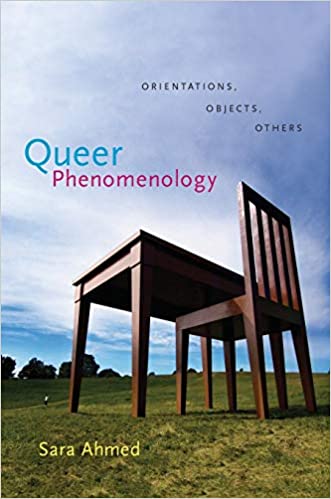 |
316.83 AHM Ahmed, Sara Queer phenomenology : orientations, objects, others Durham : Duke University Press, [2006] Contents Introduction: find your way -- Orientations toward objects -- Sexual orientation -- The orient and other others -- Conclusion: disorientation and queer objects Abstract This is a theoretical study of the spatialization of sexuality through a consideration of how the ’orientation’ of bodies within a social space informs concepts of sexual desire In this groundbreaking work, Sara Ahmed demonstrates how queer studies can put phenomenology to productive use. Focusing on the “orientation” aspect of “sexual orientation” and the “orient” in “orientalism,” Ahmed examines what it means for bodies to be situated in space and time. Bodies take shape as they move through the world directing themselves toward or away from objects and others. Being “orientated” means feeling at home, knowing where one stands, or having certain objects within reach. Orientations affect what is proximate to the body or what can be reached. A queer phenomenology, Ahmed contends, reveals how social relations are arranged spatially, how queerness disrupts and reorders these relations by not following the accepted paths, and how a politics of disorientation puts other objects within reach, those that might, at first glance, seem awry. Ahmed proposes that a queer phenomenology might investigate not only how the concept of orientation is informed by phenomenology but also the orientation of phenomenology itself. Thus she reflects on the significance of the objects that appear—and those that do not—as signs of orientation in classic phenomenological texts such as Husserl’s Ideas. In developing a queer model of orientations, she combines readings of phenomenological texts—by Husserl, Heidegger, Merleau-Ponty, and Fanon—with insights drawn from queer studies, feminist theory, critical race theory, Marxism, and psychoanalysis. Queer Phenomenology points queer theory in bold new directions. Subject Homosexuality -- Philosophy Spatial behavior 43614
|
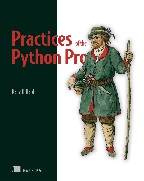 |
681.3.07.01PYTHON HIL Hillard, Dane Shelter, Island : Manning Publications, [2020] Abstract Professional developers know the many benefits of writing application code that’s clean, well-organized, and easy to maintain. By learning and following established patterns and best practices, you can take your code and your career to a new level. With Practices of the Python Pro, you’ll learn to design professional-level, clean, easily maintainable software at scale using the incredibly popular programming language, Python. You’ll find easy-to-grok examples that use pseudocode and Python to introduce software development best practices, along with dozens of instantly useful techniques that will help you code like a pro. Purchase of the print book includes a free eBook in PDF, Kindle, and ePub formats from Manning Publications. Title Sub. Python (Computer program language) 43605
|
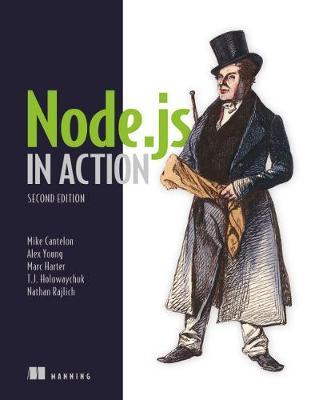 |
681.324.62JavaScript YOU Alex Young, Bradley Meck, Mike Cantelon with Tim Oxley, Marc Harter, T.J. Holowaychuk, Nathan Rajlich. Node.js in action / Second edition Shelter Island : Manning Publications, [2017] Contents Welcome to Node.js -- Node programming fundamentals -- What is a Node web application? -- Front-end build systems -- Server-side frameworks -- Connect and Express in depth -- Web application templating -- Storing application data -- Testing Node applications -- Deploying Node applications and maintaining uptime -- Writing command-line applications -- Conquering the desktop with Electron Abstract Node.js in Action, Second Edition is a thoroughly revised book based on the best-selling first edition. It starts at square one and guides you through all the features, techniques, and concepts you’ll need to build production-quality Node applications. Based on the bestselling first edition, Node.js in Action, Second Edition is a completely new book. Packed with practical examples, it teaches you how to create high-performance web servers using JavaScript and Node. You’ll master key design concepts such as asynchronous programming, state management, and event-driven programming. And you’ll learn to put together MVC servers using Express and Connect, design web APIs, and set up the perfect production environment to build, lint, and test. Title Sub. Node.js JavaScript (Computer program language) Subject Internet programming Web site development 43441
|
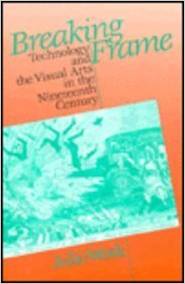 |
7.013 WOS Wosk, Julie Breaking frame : technology and the visual arts in the nineteenth century New Brunswick, New Jersey : Rutgers University Press, [1992] Contents 1. The Traumas of Transport in Nineteenth-Century Art -- 2. Art, Technology, and the Human Image -- 3. Technology and the Design Debate -- 4. The Anxiety of Imitation: Electrometallurgy and the Imitative Arts -- 5. The Struggle for Legitimacy: Cast Iron -- 6. Classicizing the Machine: Ornamented Steam Engine Frames and the Search for an Industrial Style -- Afterword: Into the Twentieth Century. Abstract In this incisive, abundantly illustrated study, Julie Wosk explores for the first time how the visual arts reflected the explosive psychological impact of the Industrial Revolution on English and American society. Wosk reveals the ways artists and designers responded to the hopes and fears for the first industrial age, and how their work continues to illuminate our own visions of technology and culture. Wosk also reveals the striking ability of artists to capture the drama and the dangers of the new technologies, seen in their images of factories spewing smoke, steam boilers bursting, trains crashing, and comic views of people-turned-automatons. Their art dramatically mirrored widespread feelings of disorientationÐÐthe phenomenon sociologists have called "breaking frame." Wosk demonstrates the startling impact of new technologies on the decorative arts and industrial design. While critics anquished, manufacturers using new materials poured out elaborately ornamented machine-made copies of original works of art. The new simulations spurred dramatic design debatesÐÐdebates which have resurfaced during our postmodern era. She also highlights how artists’ responses to a world newly transformed by technology prefigured the fear and pride, resistance and accommodation to technological achievement, that are still felt over a century later. Subject Art and technology -- History -- 19th century. 43484
|
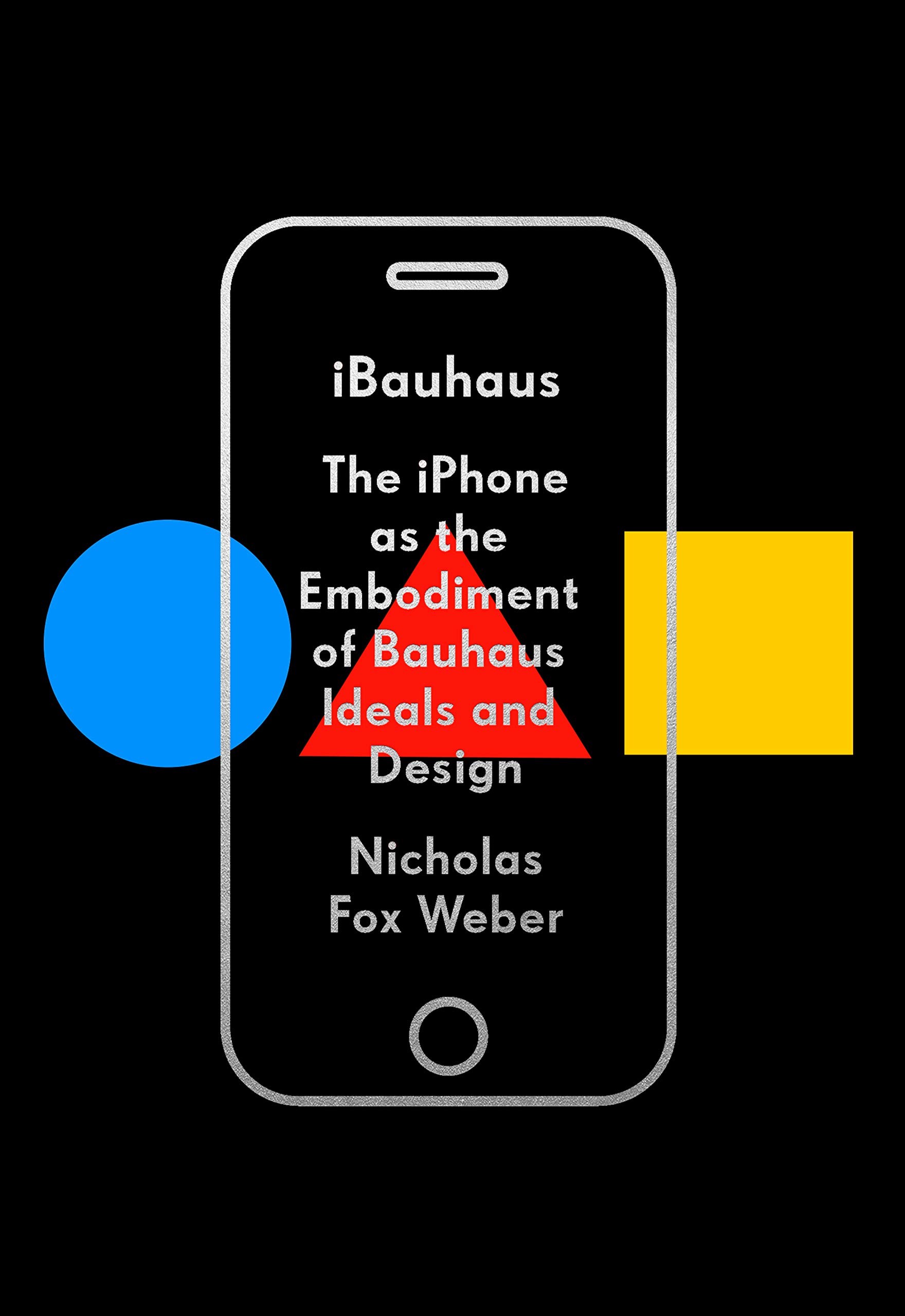 |
7.052 WEB Weber, Nicholas Fox iBauhaus : the iPhone as the embodiment of Bauhaus ideals and design New York : Alfred A. Knopf, [2020] Abstract A rich, wide-ranging meditation on the iPhone as direct descendant of the 1930s Bauhaus, one of the twentieth century’s most influential schools of art and design (summed up in Mies van der Rohe’s dictum, "less is more") whose principle aim was to connect art and industry. From one of the leading authorities on the Bauhaus and modernism. Nicholas Fox Weber, in this deft, entertaining, and brilliant rumination on art and technology, writes of the iPhone as the essence of the Bauhaus principles of form following function-of honesty of design and materials that reflect the true nature of objects and buildings, favoring linear and geometrical forms; adhering to line, shape, and colors; synthesizing art to modern times; the fusion in design of art and technology. Weber, an authority and celebrant of twentieth-century modernism, ranging from the paintings of Balthus to the architecture of Le Corbusier, was a close associate of Anni and Josef Albers, the last living giants of the Bauhaus, and absorbed firsthand its truest beliefs. The Alberses emphasized their passion for "good design over bad art." Anni, a groundbreaking textile artist and printmaker, and Josef, a painter and color theorist and influential art teacher, stuck to "what was taught at the Bauhaus: the right use of materials, good technique, a purpose that serves all." Weber writes that the Bauhaus was not a style but an attitude: clear design and visual acuity as the embodiment of morality and honesty. And in iBauhaus, Weber explores how the iPhone, with its effective design and its versatility, honors these deepest beliefs, as well as the values that the Bauhaus sought to give to the world Corp.Sub. Bauhaus Subject iPhone (Smartphone) Product design Modernism (Aesthetics) 43613
|
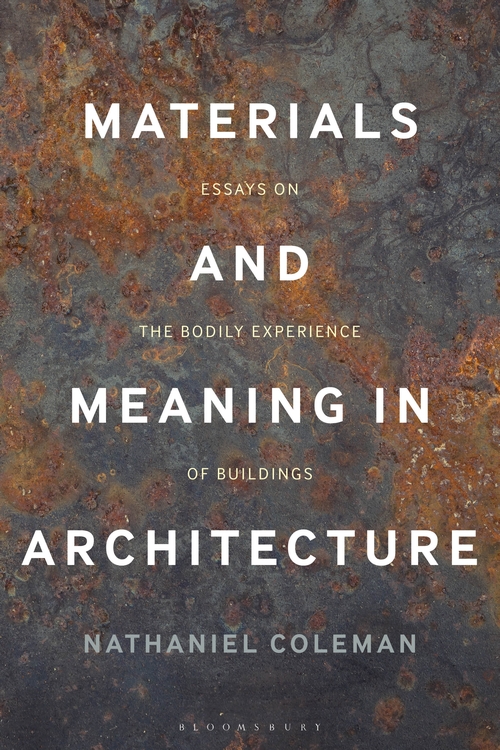 |
72.011 COL Coleman, Nathaniel Materials and meaning in architecture : essays on the bodily experience of buildings London ; New York : Bloomsbury Visual Arts, [2020] Contents Introduction1. Material as Reality Preserve: History, Theory, Design PART I: Material Theories and Practices2. John Ruskin (1819-1900): Stones of Architecture 3. Loos (1870-1933): Not the Material but What is Done With It4. Time Silted Up: Scarpa at the Castelvecchio Museum (1958-64) and Brion Cemetery (1969-1977)5. Pool and Cave: Zumthor’s Thermal Baths at Vals (1996) 6. Terminal Jewel: Williams & Tsien’s Folk Art Museum (2001)7. Tectonic Shifts: Miralles’ Arts & Crafts Ecstasy at the Scottish Parliament (2004) PART II: Narrating Materials and Meaning8. Words of Desire: Envisaging Architecture9. Human Touch: The Enduring Warmth of Wood10. Fire and Wind: The Appeal of Baking Bricks11. Wild at Heart: Concrete as Liquid Stone12. Imaging Rationality: The Resolute Modernity of Steel13. Transparency: A Darker Shade of Glass PART III: Place and Discipline14. Form is Content: Against Interpretation15. Paradoxes of Place and Discipline: Tradition as the Ground of Radical Invention BibliographyIndex. Abstract Interweaving architecture, philosophy and cultural history, Materials and Meaning in Architecture develops a rich and multi-dimensional exploration of materials and materiality, in an age when architectural practice seems otherwise preoccupied with image and visual representation. Arguing that architecture is primarily experienced by the whole body, rather than chiefly with the eyes, this broad-ranging study shows how the most engaging built works are as tactile as they are sensuous, communicating directly with the bodily senses, especially touch. It explores the theme of ’material imagination’ and the power of establishing ’place identity’ in an architect’s work, to consider the enduring expressive possibilities of material use in architecture. The book’s chapters can be dipped into, each individual chapter providing close readings of built works by selected modern masters (Scarpa, Zumthor, Williams and Tsien), insights into key texts and theories (Ruskin, Loos, Bachelard), or short cultural histories of materials (wood, brick, concrete, steel, and glass). And yet, taken together, the chapters build to a powerful book-length argument about how meaning accrues to materials through time, and about the need to reinsert the bodily experience of materiality into architectural design. It is thus also, in part, a manifesto: arguing for architecture to act as a bulwark against the tide of an increasingly depersonalised built environment. With insights for a wide range of readers, ranging from students through to researchers and professional designers, Materials and Meaning in Architecture will cause theorists to rethink their assumptions and designers to see new potential for their projects. Subject Architecture -- Human factors. Building materials 43591
|
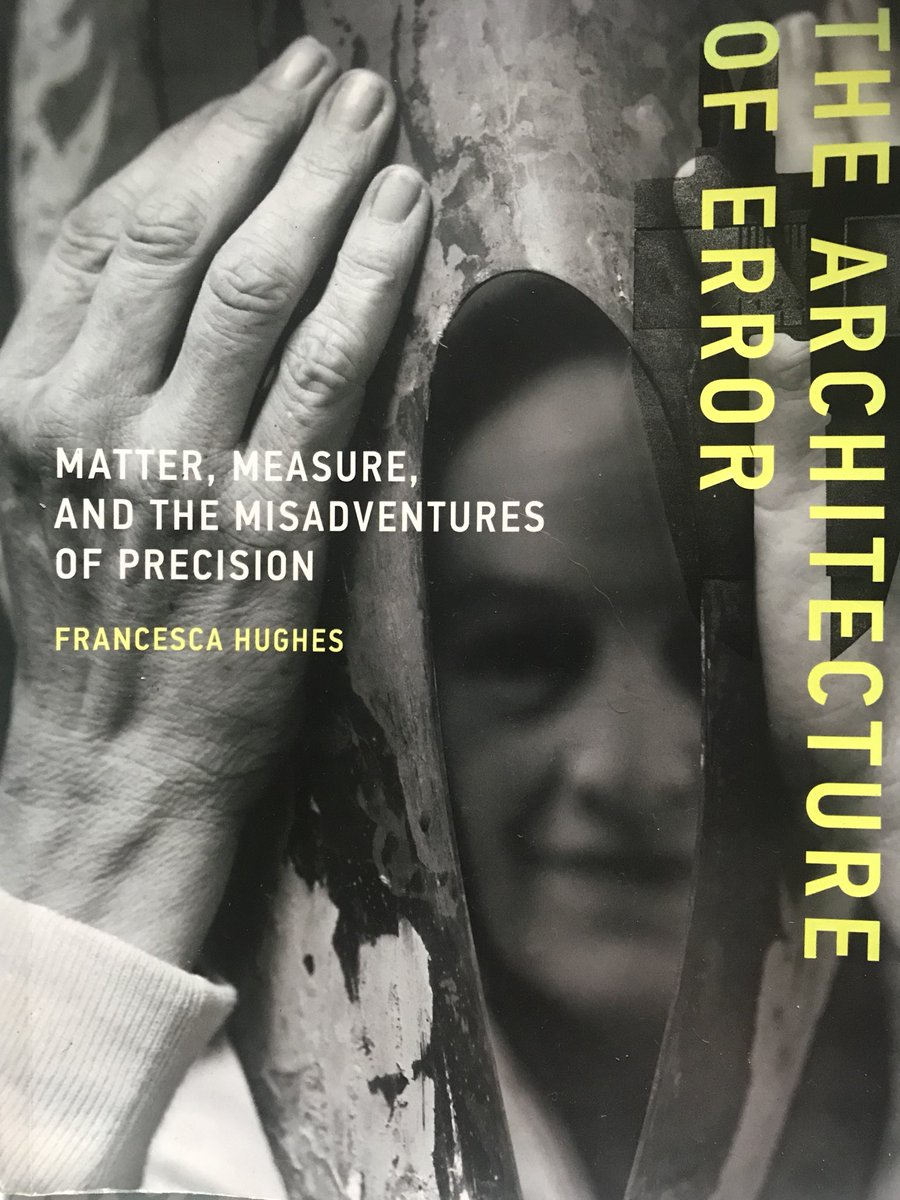 |
721.011.8 HUG Hughes, Francesca The architecture of error : matter, measure, and the misadventures of precision Cambridge, Massachusetts : MIT Press, [2014] Contents Preface -- Ackowledgments -- False Economy: Precision and Error in Architecture -- 1. The Troping of Precision -- 2. Anatomy of an Accident: Aristotle in the Garden -- 3. Room for Doubt: Instrumentalism, Inference, and Ideology -- 4. Abdicated Measures: Liquid Automation, Anxiety, and the Politics of Optimization -- 5. The Blind Spot and the Bridge -- 6. Miniature Giants: Colonial Adventures in Entropy and Scale -- 7. The Copying Machine Fails: The Double Helix and the Loop -- 8. Counted Away: Indexicality and the Sublimation of Ornament -- Postscript -- Notes -- Bibliography -- Index Abstract The Architecture of Error Francesca Hughes argues that behind the architect’s acute fetishization of redundant precision lies a special fear of physical error. What if we were to consider the pivotal cultural and technological transformations of modernism to have been driven not so much by the causes its narratives declare, she asks, as by an unspoken horror of loss of control over error, material life, and everything that matter stands for? Hughes traces the rising intolerance of material vagaries—from the removal of ornament to digitalized fabrication—that produced the blind rejection of organic materials, the proliferation of material testing, and the rhetorical obstacles that blighted cybernetics. Why is it, she asks, that the more we cornered physical error, the more we feared it? Hughes’s analysis of redundant precision exposes an architecture of fear whose politics must be called into question. Proposing error as a new category for architectural thought, Hughes draws on other disciplines and practices that have interrogated precision and failure, citing the work of scientists Nancy Cartwright and Evelyn Fox Keller and visual artists Gordon Matta-Clark, Barbara Hepworth, Rachel Whiteread, and others. These non-architect practitioners, she argues, show that error need not be excluded and precision can be made accountable. Subject Architectural design Measurement Architects -- Psychology. 43592
|
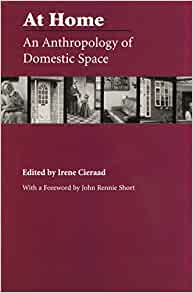 |
728.1 ATH At home : an anthropology of domestic space Syracuse : Syracuse University Press, [1999] Contents Introduction: anthropology at home / Irene Cieraad -- Domesticity in dispute: a reconsideration of sources / Heidi de Mare -- Dutch windows: female virtue and female vice / Irene Cieraad -- The ins and outs of the hall: a Parisian example / Céline Rosselin -- "I’ve always fancied owning me own lion": ideological motivations in external house decoration by recent homeowners / John A. Dolan -- Bringing modernity home: open plan in the British domestic interior / Judy Attfield -- The French two-home project: materialization of family identity / Sophie Chevalier -- Home: the experience of atmosphere / Paul J.J. Pennartz -- Negotiating space in the family home / Moira Munro and Ruth Madigan -- The domestication of laundering / Rudi Laermans and Carine Meulders -- Constructing home: a crossroads of choices / Elizabeth Shove -- "Postmodern" home life / Tim Putnam. Abstract In a volume that brings together a wide range of disciplines - art history, sociology, architecture, cultural anthropology, and environmental psychology - Irene Cieraad presents a collection of articles that focuses on the practices and symbolism of domestic space in Western society. These essays go beyond the discussion of conventional issues such as aesthetics and social standing. At Home takes an in-depth anthropological look at how different cultures use their homes as a visual model of the culture’s social structure. Subject Architecture, Domestic Human territoriality. Home. Spatial behavior Domestic relations 43606
|
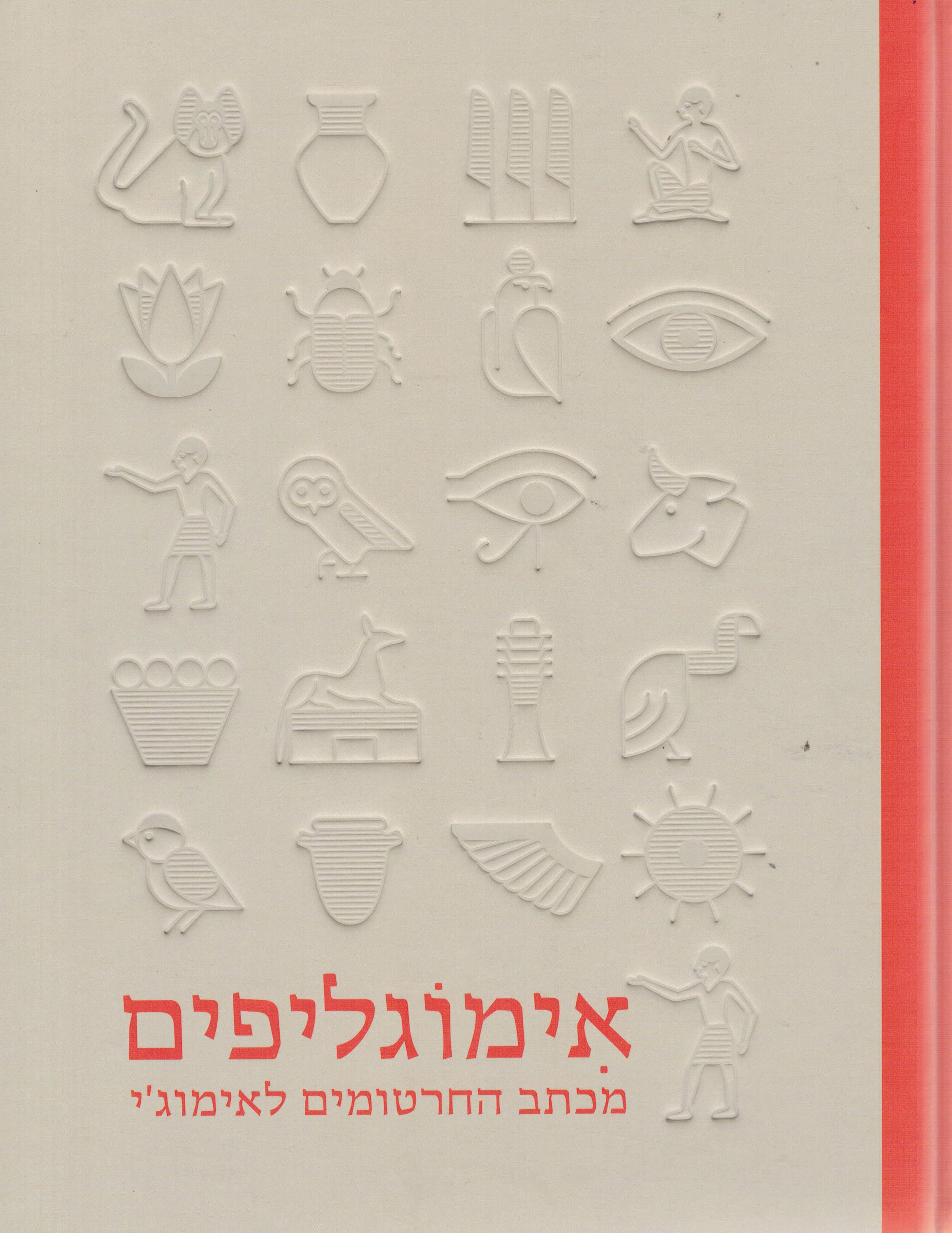 |
744.9 בן-ד בן-דור-אבין, שירלי אימוגליפים : מכתב החרטומים לאימוג’י ירושלים : מוזיאון ישראל, [2019] כתב החרטומים שהתפתח במצרים לפני כ–5,000 שנה כלל מאות תמונות שהיה אפשר לכתוב באמצעותן הכול - מרשימת מכולת ועד שירת הלל לאלים. אבל נדרשו לשם כך ידע עצום ומיומנות ניכרת, ובחלוף הזמן תפסה את מקום התמונות כתיבה קלה יותר ובה כ–20 סימנים אלפביתיים בלבד המושלים עד היום בתרבות המערב. נדמה היה שכתיבה בתמונות נזנחה לעד, ואולם, בעידן הדיגיטלי של המאה ה–21 שבה התמונה - אימוג׳י, פרצופון בעברית — לככב באינספור מסרונים הנשלחים תדיר. מדי שנה נוספים לכתב זה עשרות סימנים חדשים, ויש הרואים בו את השפה המתפתחת בקצב המהיר ביותר בעולמנו. באמצעות שלל ממצאים ממצרים העתיקה - המוצגים על רקע השימוש העכשווי באימוג׳י - מובא גלגולה של הכתיבה בתמונות מהעת העתיקה ועד מערכת הכתב המודרנית. סרטונים נלווים ועמדות מולטימדיה חושפים כיצד בעידן הסייבר, כמו גם בימי הפירמידות, התמונות אינן רק כתב אלא מערכת מורכבת ומתוחכמת של תקשורת חזותית. על החפצים מאוסף המוזיאון, רבים מהם מוצגים לראשונה, נוספת השאלה מאוסף פרטי בלונדון. Subject Egyptian language -- Writing, Hieroglyphic Art -- Egypt, Ancient. Signs and symbols Emoticons Digital communications Symbolism in communication Emojis Languages, Artificial 43617
|
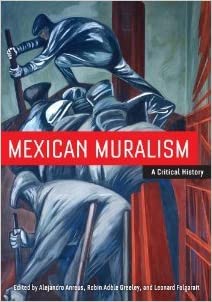 |
75.052(72) MEX Mexican muralism : a critical history Berkeley, California : University of California Press, [2012] Contents Introduction / Robin Adèle Greeley -- Part 1. Mexican Muralism: Beginnings, Development, Ideologies, And National Responses. Muralism and the State in Post-Revolution Mexico, 1920-1970 / Robin Adèle Greeley ; Los Tres Grandes: Ideologies and Styles / Alejandro Anreus ; "All Mexico on a Wall": Diego Rivera’s Murals at the Ministry of Public Education / Mary K. Coffey ; Siqueiros’ Communist Proposition for Mexican Muralism: A Mural for the Mexican Electricians’ Syndicate / Jennifer A. Jolly ; Jose Clemente Orozco’s Use of Architecture in the Dartmouth Mural / Leonard Folgarait ; Murales Estridentes: Tensions and Affinities between Estridentismo and Early Muralism / Tatiana Flores ; Young Muralists at the Abelardo L. Rodriguez Market / Esther Acevedo ; Nietzsche contra Marx in Mexico: The Contemporáneos, Muralism, and Debates over "Revolutionary" Art in 1930s Mexico / Robin Adèle Greeley -- Part 2. Muralism’s Hemispheric Influences. Siqueiros’ Travels and "Alternative Muralisms" in Argentina and Cuba / Alejandro Anreus ; Social Realism and Constructivist Abstraction: The Limits of the Debate on Muralism in the Río de la Plata Region (1930-1950) / Gabriel Peluffo Linari ; Mexican Muralism in the United States: Controversies, Paradoxes, and Publics / Anna Indych-López -- Part 3. Contemporary Responses to Muralism. Murals and Marginality in Mexico City: The Case of Tepito Arte Acá / Leonard Folgarait ; Radical Mestizaje in Chicano/a Murals / Holly Barnet-Sanchez ; An Unauthorized History of Post-Mexican School Muralism / Bruce Campbell -- Part 4. Chronology and Primary Texts. Chronology / Alejandro Anreus, Holly Barnet-Sanchez, Bruce Campbell ; Primary Texts / Alejandro Anreus ; Manifesto of the Syndicate of Technical Workers, Painters and Sculptors (Mexico City, 1923) ; José Clemente Orozco, "New World, New Races and New Art" (New York, 1929) ; Diego Rivera, "The Revolutionary Spirit in Modern Art" (Baltimore, 1932) ; David Alfaro Siqueiros, "A Call to Argentine Artists" (Buenos Aires, 1933) ; David Alfaro Siqueiros, "Toward a Transformation of the Plastic Arts" (New York, 1934) ; José Clemente Orozco, "Orozco ’Explains’" (New York, 1940). Abstract In this comprehensive collection of essays, three generations of international scholars examine Mexican muralism in its broad artistic and historical contexts, from its iconic figures―Diego Rivera, José Clemente Orozco, and David Alfaro Siquieros―to their successors in Mexico, the United States, and across Latin America. These muralists conceived of their art as a political weapon in popular struggles over revolution and resistance, state modernization and civic participation, artistic freedom and cultural imperialism. The contributors to this volume show how these artists’ murals transcended borders to engage major issues raised by the many different forms of modernity that emerged throughout the Americas during the twentieth century. Per.Sub. Rivera, Diego 1886-1957. Orozco, José Clemente 1883-1949. Siqueiros, David Alfaro 1896-1974. Subject Mural painting and decoration, Mexican -- 20th century. Mural painting and decoration -- Political aspects -- Mexico. 43612
|
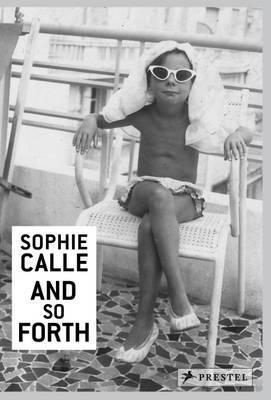 |
77.04 CAL Calle, Sophie Munich : Prestel, [2016] Contents Looking and looking back / interview with Marie Desplechin -- Unfinished : Unfinished (1988-2003) ; Suicide (2014) ; Secrets (2014) ; Collateral damage. Targets (1990-2003) -- For the last and first time : The last image (2010) ; Voir la mer (2011) ; What do you see? (2013) ; Purloined (1994-2013) -- Take care of yourself : Take care of yourself, Venice and writing / interview with Marie Desplechin ; Take care of yourself (2004-2007) -- Frank Gehry : In memory of Frank Gehry’s Flowers (2014) ; The phone booth (2006-2012) -- Performances : Performances: striptease, telephone and other interventions in public places / interview with Marie Desplechin ; Transport-amoureux (2007) ; Now what? (1998-2001) ; Unsold (2014) ; Where could you take me? (2014) ; Liberté surveillée (2014) ; Here lie secrets (2014) ; Room 20 (2013) -- Silent photos : Photos without stories (1979-2013) ; Collateral damage. Enemy statues (2001) -- Autobiographies : Silence (2012) ; Today my mother died (2013) ; Dead in a good mood (2013) ; Obituary (2012) ; The giraffe (2012) ; Renée de face (2010) ; The hairdryer (2014) ; Morning (2016) -- Where and when : Where and when, Berck (2004-2008) ; Where and when, Lourdes (2005-2008) ; Where and when, nowhere (2008-2012) -- Rachel Monique : Rachel Monique, of love, celebrations and cemeteries / interview with Marie Desplechin ; Rachel Monique (2007-2014) ; North Pole (2009) -- Because : Appendixes. Abstract Throughout her career, the photographer and installation artist Sophie Calle has been creating tableaux that recreate her personal journeys. Projects from the past 10 years are explored in this magnificently illustrated volume. Following on the heels of Calle’s highly acclaimed ’Did You See Me?’ this new book offers numerous images of Calle’s most recent works. Among the projects included are "The Phone Booth, Garigiliano Bridge," which involved a public phone that Calle called at random to initiate conversations with strangers; "Take Care of Yourself," which documents the interpretations of more than 100 women of a breakup note Calle received from a former lover; "The North Pole," a touching tribute to the artist’s mother that imagines her realizing a lifelong dream; and the latest iteration of "What do You See," which was created in response to one of the most brazen art heists of all time, at Boston’s Isabella Stewart Gardner Museum. Many ongoing series are also illustrated here, including "Unfinished," "Herein Lie Secrets," and "Photos without Stories."-- Publisher’s statement. Per.Sub. Calle, Sophie, 1953- Subject Photography, Artistic Artists’ books -- France -- History -- 20th century. Artists’ books -- France -- History -- 21st century. Installations (Art) 43532
|
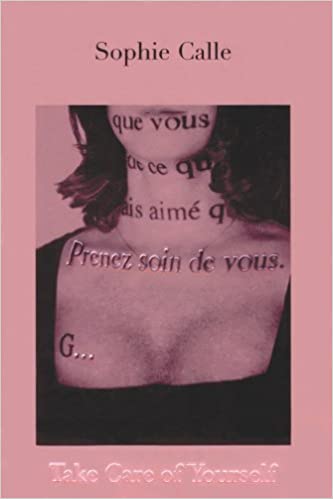 |
77.04 CAL Calle, Sophie Take care of yourself = [Prenez soin de vous] [Paris] : Actes Sud, 2007 Contents disc 1. The mediation session -- disc 2. Phone conversation with Macha Beranger -- disc 3. Number 86, a film by Laetitia Masson -- disc 4. Actors, singers, musicians, composers, dancers, a clown, a performace artist, a magician, a rifle shooter, puppets, and a parrot interpret the breakup letter Abstract In this remarkable artist’s book, French conceptual artist/provocateur Sophie Calle presents 107 outside interpretations of a "breakup" e-mail she received from her lover the day he ended their affair. Featuring a stamped pink metallic cover, multiple paper changes, special bound-in booklets, bright green envelopes containing DVDs and even Braille endpapers, it is a deeply poignant investigation of love and loss, published to coincide with the 2007 Venice Biennale--where Calle served as that fair’s French representative. All of the interpreters of Calle’s breakup letter were women, and each was asked to analyze the document according to her profession--so that a writer comments on its style, a justice issues judgment, a lawyer defends Calle’s ex-lover, a psychoanalyst studies his psychology, a mediator tries to find a path towards reconciliation, a proofreader provides a literal edit of the text, etc. In addition, Calle asked a variety of performers, including Nathalie Dessay, Laurie Anderson and Carla Bruni, among others, to act the letter out. She filmed the singers and actresses and photographed the other contributors, so that each printed interpretation stands alongside at least one riveting image of its author, and some are also accompanied by digital documentation. The result is a fascinating study and a deeply moving experience--as well as an artwork in its own right. Already a collector’s item, this is a universal document of how it feels to grieve for love Per.Sub. Calle, Sophie, 1953- Subject Photography, Artistic Photography of women -- France Artists’ books -- France Women in the professions -- France. Man-woman relationships in art Letters in art Conceptual art Group work in art Separation (Psychology) Rejection (Psychology) 43533
|
- כתבות, חדשות ואירועים



